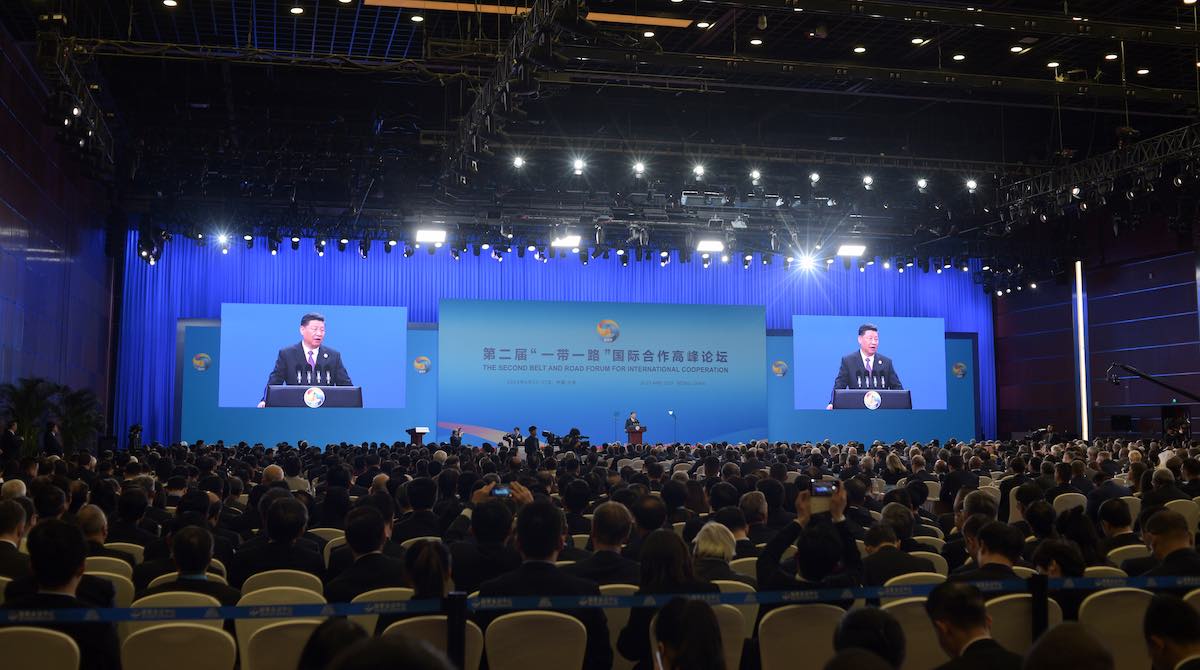(ATF) Heaps is being talked about the impact of the pandemic on China’s continuation of the Belt and Road initiative and how debt should be relieved for affected countries, most of them emerging nations.
Washington is leaving no stone unturned to foment the sentiment and use the widely propagated debt trap as yet another pressure point against Beijing. The media is doing its part and probably to an extent instrumentalised when publicly calling for debt forgiveness.
The picture that is being painted here is one of China maliciously leveraging the crisis to its advantage, seizing strategic assets from subjugated partners. Washington has frequently pointed the finger at Sri Lanka’s Hambantota port as a basket case. While it is true that the port project has been financed by China and privatised to a Chinese investor in 2017, it simply helped a newly elected government to deal with a balance of payment crisis that did in no way originate from China’s dealing with the country.
Beijing is obviously best advised not look beyond the realities of many of the Belt and Road nations’ economies and financial situations being hard-pressed. But the question arises whether Chinese lenders can simply heed the calls and comply with debt relief, and whether they should in the first place. As to the point of whether they can, we have to understand that the mechanism of Chinese lending to Asian and African nations differs in many aspects from conventional development financing.
IMF, World Bank
As opposed to the IMF and the World Bank loans from China come in sometimes distinct forms and typically from a variety of lenders. In other words, to call for China to join in to forgive its bilateral debt in a similar shape, form and quantity as the two US-sponsered institutions do is missing the point. For example, China does not impose economic conditions as is commonly required by IMF and Worldbank, and there is a central government body that decides whether relief is warranted.
On top of this, China’s side of these relationships has diversified. One might consider a majority of those banks and companies state-owned or at least to some extent -controlled, but it is not one government institution that controls the financing like we may have seen in past exercises of debt cancellations. Those commercial lenders cannot and will not comply with international public calls for debt relief. They will rather seek to restructure their exposure for their own advantage and meeting borrowers’ capabilities.
Debt forgiveness is a double-edged sword. China may actually be ill-advised to be too generous. It always subordinates everyone else who have already paid their dues. At the same time, commercial lenders including policy banks and state-owned companies may be less inclined to continue their engagements. Who is to say that tough negotiations and debt restructurings will not achieve better results to bring an ailing sovereign borrower back to the ropes.
China will have learned a thing or two from America’s own backyard cases and be keenly aware of the disastrous debt and -forgiveness cycles in Argentina. It is hardly conceivable that Beijing will consider going down the same path. Washington may scoff at the many public-private partnerships between Chinese companies and Belt and Road government agencies that have emerged from bilateral debt restructurings, but many of them seem to work well. No one’s lost their sovereignty over them.
Quite the contrary, equity injections work both ways. They relieve the borrower from a potentially oversized debt burden, and the Chinese companies become even more committed stakeholders in a project and a country’s economic future. I am well aware that this sounds idealistic and such engagements are mostly driven by hard commercial interests, but it still sounds like a sensible way to align developing nations’ objectives being overlaid by a generational Chinese initiative.
As I have indicated in a previous post, despite the widespread claims in the mainstream media that Belt and Road has excruciatingly suffered and kind of seen its final days as it had been envisaged, the opposite is likely to be true. The crisis may well become a facilitator for further integration. Comparing the Chinese modus operandi with Western conventions is limping. We should give China the benefit of the doubt, and a chance, and ourselves learn from their experiences.
Roland Hinterkoerner is a former banker and founder of www.expertise-asia.com
























